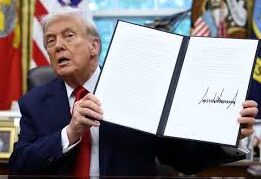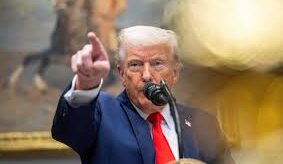The United States and China have extended their trade war ceasefire until November 10, just hours before higher tariffs were set to take effect between the world’s two largest economies.
In a joint statement, Beijing and Washington confirmed that increased tariffs will remain suspended for another 90 days.
Talks last month ended with both sides calling the negotiations “constructive.” China’s top negotiator stressed the importance of maintaining the truce, while US officials awaited President Donald Trump’s final approval. On Monday, Trump signed an executive order to extend the tariff truce.
Under the agreement, the US will keep a 30% tariff on Chinese imports, while China will maintain a 10% tariff on American goods.
At one point, Washington had threatened tariffs of up to 145% on Chinese goods, while Beijing had imposed 125% duties on US shipments. Following trade talks in Geneva in May, both countries agreed to lower the rates.
The White House said the latest extension will allow more time to address trade imbalances and “unfair trade practices.” It cited a $300 billion US trade deficit with China in 2024, the largest among its trading partners. The talks aim to expand market access for US exporters, address national security issues, and tackle broader economic concerns.
A Chinese Embassy spokesperson in Washington said: “Win-win cooperation is the right path for China and the US; coercion and containment will lead nowhere.” China urged the US to lift “unreasonable” trade restrictions, benefit companies on both sides, and work together to stabilize global semiconductor production.
Without the truce extension, the return of high tariffs could have reignited trade turmoil and economic uncertainty, with risks to prices and markets.
However, some US business owners say the extension still means uncertainty. “There’s no way to plan for the future,” said Beth Beneke, founder of BBB, citing a lack of control over costs due to unpredictable tariffs.
US-China trade tensions peaked in April when Trump unveiled sweeping new tariffs on goods from around the world, hitting China hardest. Beijing retaliated, sparking a tit-for-tat tariff battle that pushed duties into triple digits and nearly froze trade. In May, both sides agreed to roll back some measures.
As a result of the deal, Chinese goods entering the US now face 30% additional tariffs compared to early in the year, while US goods entering China face 10% new tariffs.
Negotiations also cover access to China’s rare earth minerals, its purchases of Russian oil, and US export restrictions on advanced technology like semiconductors. Recently, Trump eased some restrictions, allowing companies like AMD and Nvidia to sell certain chips to Chinese firms in exchange for sharing 15% of the revenue with the US government.
The US is also pressuring ByteDance to spin off TikTok, a move opposed by Beijing.
Even with the truce, trade flows have been hit. US government data shows imports of Chinese goods in June were nearly half of what they were in June 2024. In the first six months of 2025, the US imported $165 billion worth of goods from China about 15% less than the same period last year while US exports to China fell by roughly 20% year-on-year.






